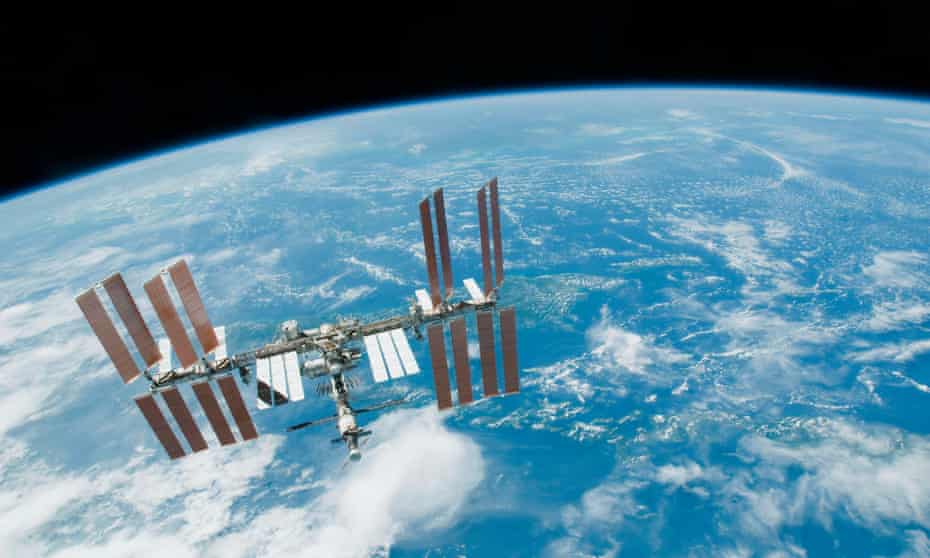Extract from The Guardian
Nasa confirmed the ISS will plunge into the Pacific ocean to join other decommissioned space stations, satellites and space debris.

The International Space Station backdropped by Earth's horizon and the blackness of space.
First published on Thu 3 Feb 2022 13.42 AEDT
The International Space Station (ISS) will continue its operations until 2030 before heading for a watery grave at the most remote point in the Pacific, Nasa confirmed in a new transition plan this week.
More than 30 years after its 1998 launch, the ISS will be “de-orbited” in January 2031, according to the space agency’s budget estimates. Once out of orbit the space station will make a dramatic descent before splash-landing in Point Nemo, which is about 2,700km from any land and has become known as the space cemetery, a final resting place for decommissioned space stations, old satellites and other human space debris.
Also known as the “Oceanic Pole of Inaccessibility” or the “South Pacific Ocean Uninhabited Area”, the region around the space cemetery is known for its utter lack of human activity. It’s “pretty much the farthest place from any human civilization you can find”, as Nasa put it.
While celebrating the ISS’s record of scientific accomplishments, Robyn Gatens, the director of the International Space Station at Nasa headquarters, also emphasized in a statement that its current goal was to “lay the groundwork for a commercial future in low-Earth orbit”.
“We look forward to sharing our lessons learned and operations experience with the private sector to help them develop safe, reliable and cost-effective destinations in space,” said Phil McAlister, the director of commercial space at Nasa headquarters, said in a statement.
Nasa estimated that transitioning its space research from a dedicated space station to renting space aboard commercial space ventures would save $1.3bn in 2031 alone, and that the savings could “be applied to Nasa’s deep space exploration initiatives, allowing the agency to explore further and faster into deep space”.
The ISS, about the size of an American football field, orbits the Earth about once every 90 minutes, and has been continuously occupied by astronauts since November 2000.
In September, a Russian official warned that small cracks had been discovered on the space station that could worsen over time and raised concerns about ageing equipment and the risk of “irreparable failures”, BBC News reported.
The space station was originally intended to operate for just 15 years, but Nasa said in a report that “there is high confidence that ISS life can be further extended through 2030”, though some analyses of its viability are still being conducted.
ISS was “examining the recent technical issues aboard the Russian segment”, Nasa said in its report.

The space station’s end is likely to be fiery. The “downfall” of Mir, the Russian space station, happened in March 2001, when a cargo ship fired its engines to push the space station out of orbit and send it plummeting towards Earth. While solar panels and other peripheral pieces of the space station broke off during its fall, about 20 to 25 tons of remnants fell together, resulting in sonic booms, according to Nasa’s documentation.
This article was amended on 3 February 2022 to correct the year in the headline from 2030 to 2031.
No comments:
Post a Comment